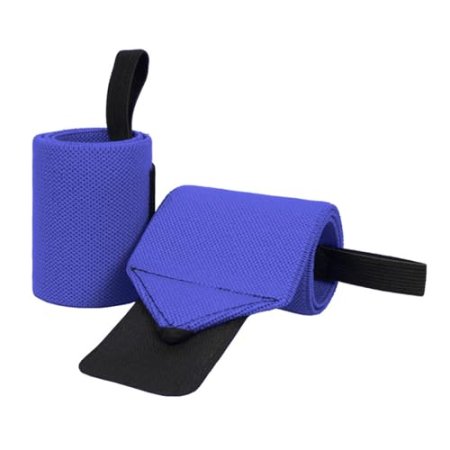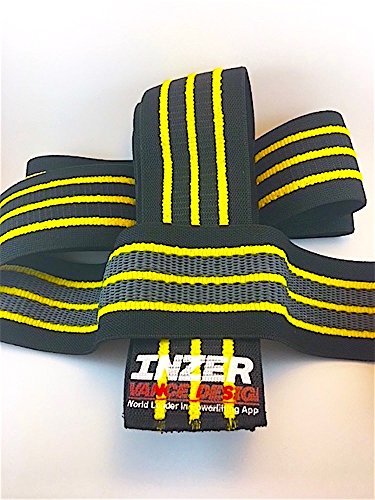Introduction to Joint Wraps
What Are Joint Wraps?
Joint wraps are supportive bands designed to stabilize and protect joints during physical activity or recovery. They come in various types and materials, each serving different purposes to aid in injury prevention, pain relief, and performance enhancement.
History and Evolution of Joint Wraps
Joint wraps have been used for centuries, evolving from basic cloth strips to advanced, high-tech materials. Initially, they were simple cloths used to bind injuries. Modern joint wraps incorporate materials like neoprene and elastic fibers to offer better support and flexibility.
Importance in Modern Fitness and Rehabilitation
In today’s fitness and rehabilitation settings, joint wraps are indispensable. They provide essential support for joints during high-impact activities and aid in the recovery process by reducing swelling and discomfort.
Types of Joint Wraps
Compression Wraps
Compression wraps apply pressure to a specific area, reducing swelling and enhancing circulation. They are commonly used in injury management to control inflammation and support joint stability.
Neoprene Wraps
Neoprene wraps are made from a synthetic rubber material that provides warmth and compression. They are popular for their flexibility and ability to retain body heat, which can help in alleviating joint pain and stiffness.
Elastic Bandage Wraps
Elastic bandage wraps are versatile and can be adjusted for different levels of compression. They are ideal for wrapping joints and muscles to provide support and reduce swelling.
Thermal Wraps
Thermal wraps use heat therapy to relieve muscle and joint pain. They are designed to be heated in a microwave or hot water and then applied to the affected area, promoting relaxation and pain relief.
Key Features and Benefits
Support and Stability
One of the primary benefits of joint wraps is the support and stability they provide. They help keep joints in place, reducing the risk of injuries during physical activities and supporting proper alignment.
Pain Relief and Injury Prevention
Joint wraps can alleviate pain by providing compression and support. They help prevent injuries by reducing strain on the joints and muscles, making them an essential tool for athletes and individuals recovering from injuries.
Enhanced Performance
By stabilizing the joints, joint wraps can enhance performance by allowing you to focus more on your activity and less on discomfort or potential injuries. They also help maintain optimal joint function during intense workouts.
Recovery and Rehabilitation
In the recovery phase, joint wraps aid in reducing swelling and promoting healing. They support the joint structure and can speed up the rehabilitation process by providing necessary stability and comfort.
How to Choose the Right Joint Wrap
Assessing Your Needs
Consider your specific needs when choosing a joint wrap. Different activities and injuries require different types of support, so select a wrap that matches your requirements, whether for daily use, sports, or rehabilitation.
Size and Fit Considerations
Proper sizing and fit are crucial for effective support. Measure the area where you’ll use the wrap and refer to the manufacturer’s sizing chart. A well-fitting wrap ensures optimal compression and support without causing discomfort.
Material and Durability
The material of the joint wrap affects its durability and comfort. Choose a material that suits your needs, whether for flexibility, warmth, or moisture-wicking properties. Durability is also important to ensure that the wrap withstands regular use.
Brand and Price
Compare brands and prices to find a joint wrap that fits your budget and offers the features you need. While higher-priced options may offer advanced features, there are also affordable wraps that provide excellent support and comfort.
Proper Usage of Joint Wraps
Applying Joint Wraps Correctly
To apply a joint wrap correctly, follow the manufacturer’s instructions. Ensure that the wrap is snug but not too tight, and adjust the tension as needed to provide the right level of support and compression.
Common Mistakes to Avoid
Avoid common mistakes such as wrapping the joint too tightly or using the wrong type of wrap for your needs. Ensure that the wrap is applied evenly and does not restrict circulation or cause discomfort.
How to Clean and Maintain Your Wrap
Proper cleaning and maintenance extend the life of your joint wrap. Follow care instructions, which may include hand washing or machine washing on a gentle cycle. Allow the wrap to air dry completely before reusing.
Joint Wraps vs. Other Support Gear
Joint Wraps vs. Braces
Unlike braces, which offer rigid support and immobilization, joint wraps provide flexible support and compression. Braces are often used for more severe injuries or conditions, while wraps offer more versatility for everyday use and moderate support.
Joint Wraps vs. Sleeves
Joint sleeves offer continuous support without the need for wrapping. They are often used for compression and warmth but do not provide the adjustable support that wraps can. Choose based on your preference for flexibility and adjustability.
Joint Wraps vs. Supports
Supports can refer to various types of gear, including wraps, braces, and sleeves. Joint wraps are specifically designed for adjustable compression and support, while other supports may offer different levels of rigidity or stability.
Common Myths and Misconceptions
Debunking Myths About Joint Wraps
Several myths surround joint wraps, such as the belief that they cause dependency or that more expensive wraps are always better. Understanding the truth can help you make informed decisions and use joint wraps effectively.
Do Joint Wraps Cause Dependency?
No, joint wraps do not cause dependency. They are designed to provide support and relief while allowing you to gradually strengthen and rehabilitate the joint. Proper use of joint wraps supports recovery without hindering progress.
Are Expensive Wraps Always Better?
Not necessarily. While expensive wraps may offer advanced features or higher-quality materials, the effectiveness of a wrap depends on its fit and suitability for your needs rather than its price.
Top Joint Wrap Products and Reviews
Highly Rated Joint Wraps
Some joint wraps receive high ratings for their quality, comfort, and effectiveness. Look for reviews and recommendations to find wraps that consistently perform well and meet user expectations.
Budget-Friendly Options
For those on a budget, several affordable joint wraps offer good support and durability. These options may lack some advanced features but still provide essential benefits for most users.
Premium Choices
Premium joint wraps often feature advanced materials and designs for enhanced comfort and support. If you’re willing to invest in high-end wraps, these options can offer additional benefits and longer-lasting performance.
Conclusion
Summary of Key Points
Joint wraps are valuable tools for supporting and protecting joints during physical activities and recovery. By choosing the right wrap, using it correctly, and understanding common myths, you can enhance your performance, prevent injuries, and aid in rehabilitation.
Final Recommendations
Select joint wraps based on your specific needs, preferences, and budget. Prioritize comfort, fit, and functionality to ensure you get the most out of your wrap. Regular maintenance and proper usage will help you maximize the benefits of this essential support gear.
Frequently Asked Questions (FAQs)
How Long Should I Wear a Joint Wrap?
Wear your joint wrap as directed by your healthcare provider or the manufacturer. Typically, wraps can be worn during activities and removed after to allow the joint to breathe. For chronic conditions, consult a professional for specific guidance.
Can Joint Wraps Help with Chronic Pain?
Yes, joint wraps can provide relief from chronic pain by offering compression and support. They help reduce inflammation and stabilize the joint, which can alleviate discomfort over time. Consult with a healthcare provider for a tailored approach to managing chronic pain.
What Size Joint Wrap Do I Need?
Choose a joint wrap based on the measurements of the area you need to support. Refer to the sizing chart provided by the manufacturer to select the appropriate size














